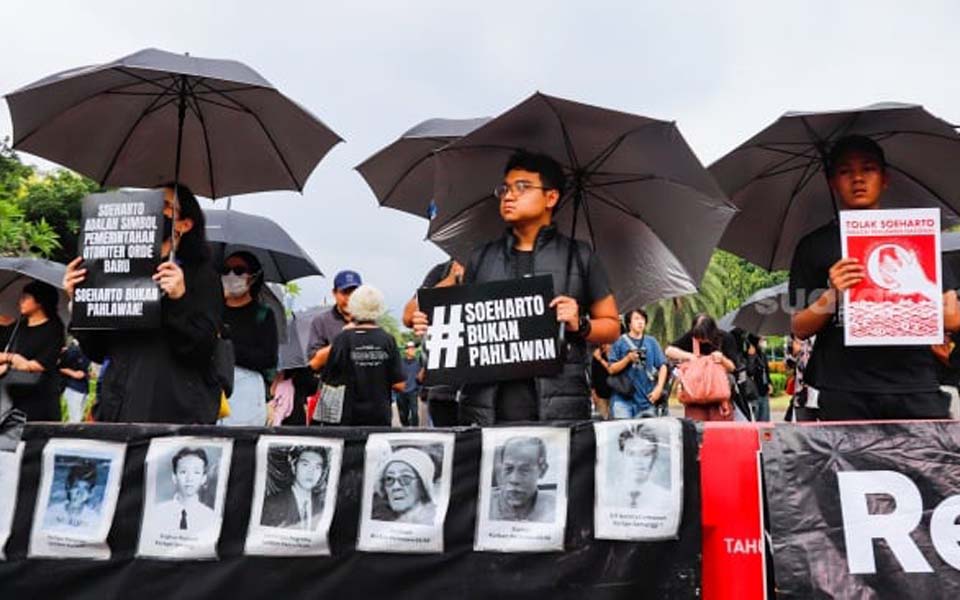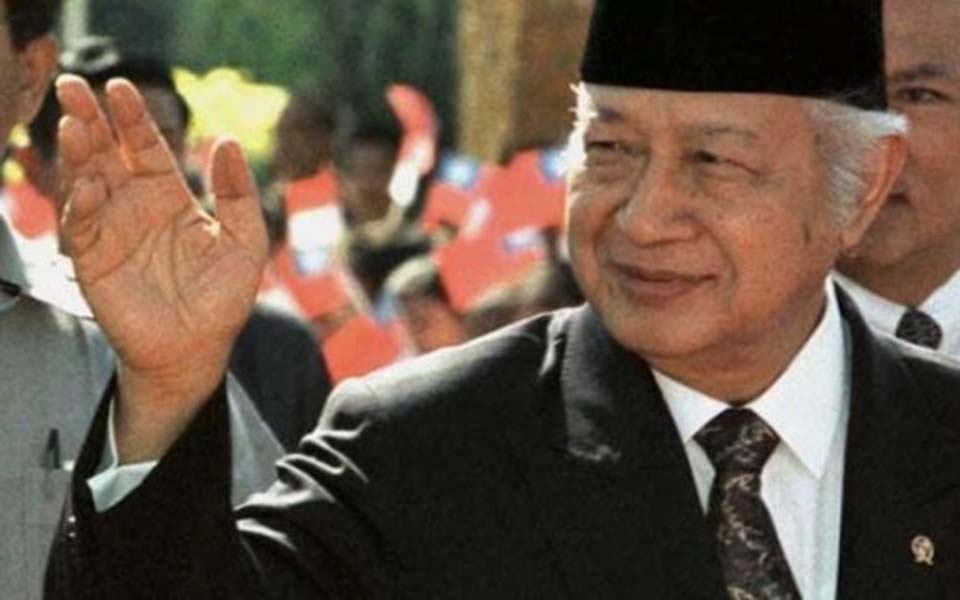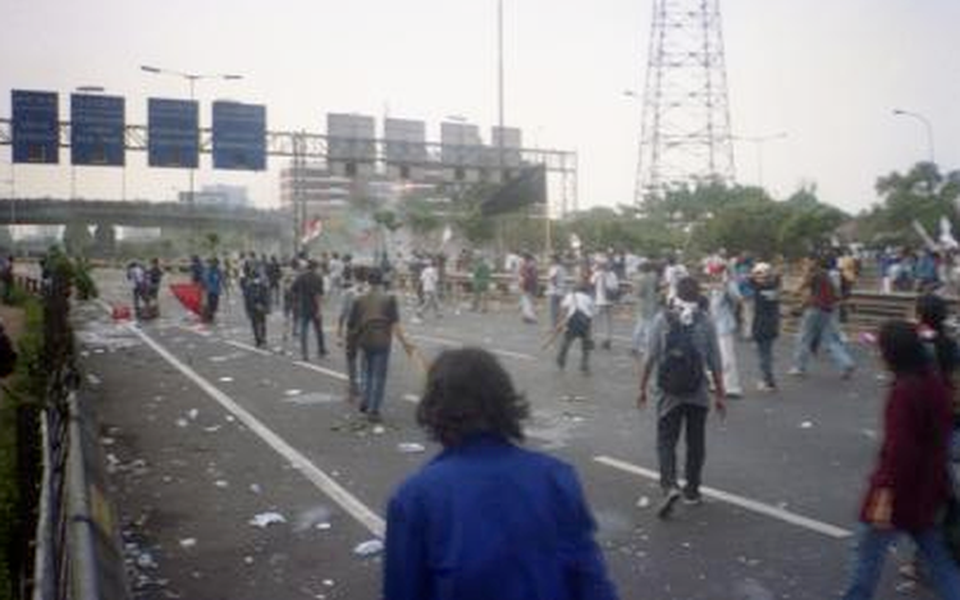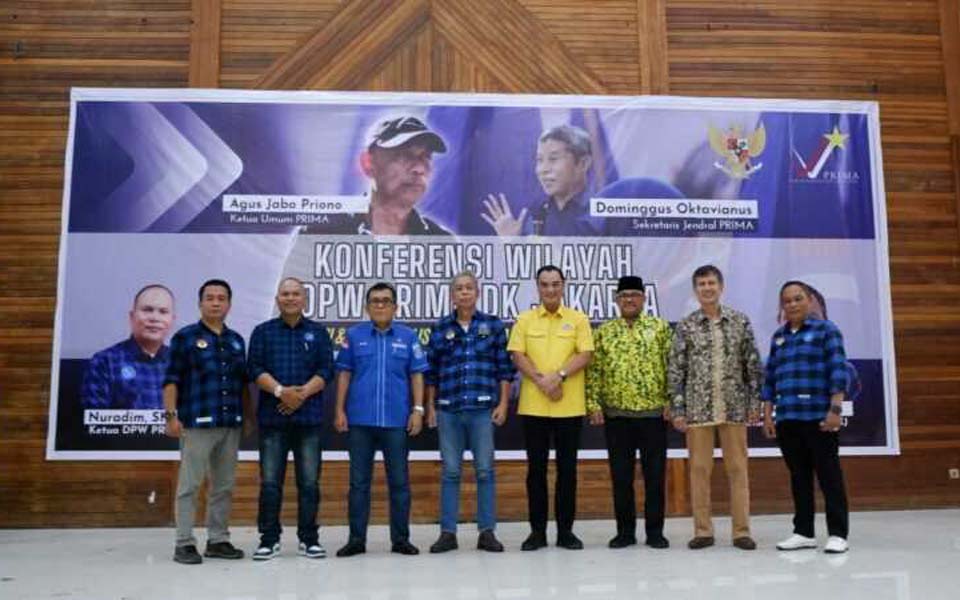Achmad Nasrudin Yahya, Jakarta – The July 27, 1996 riots – also known as Kudatuli – was one of the most important incidents during the era of the New Order regime of former president Suharto.
The attack and vandalism on the Indonesian Democratic Party's (PDI) headquarters in Central Jakarta began when supporters of the Soerjadi camp refused to accept the results of the PDI's extraordinary congress in Surabaya (East Java) on December 2-6, 1993.
Megawati Sukarnoputri had been elected as the PDI's general chairperson which was then promulgated at a national conference on December 22, 1993 in Jakarta.
Despite this, attempts to overturn Megawati's election still occurred.
As quoted by kompaspedia.kompas.id on June 3, 1996, some 50 PDI branch level directors (DPC) went to meet with the Director General of Social and Political Affairs at the Home Affairs Department, Soetoyo NK. They claimed to represent 215 party branches from 21 regional leadership boards (DPD).
During the meeting, they declared their wish to resolve the party's leadership problem through a congress.
That wish was apparently supported by several groups within the government with Soetoyo telling them that the government would be happy to let the PDI hold a congress.
The result of the congress, which was held in Medan, North Sumatra on June 22, 1996, was that Soerjadi was elected as the PDI general chairperson for the period 1996-1998.
According to Indonesian military (then called ABRI) Socio-Political Chief of Staff at the time – Lieutenant General Syarwan Hamid – the government acknowledged the results of the Medan PDI congress. Thus the government did not acknowledge the Megawati leadership.
Support for Megawati however continued to flow in, particularly from activists and students opposed to the Suharto regime. The PDI headquarters on Jalan Diponegoro in Central Jakarta became one of the main locations for the expression of support for Megawati.
Efforts to resolve the leadership dispute were unsuccessful until in the end, riots broke out on Saturday July 27, 1996 [after paid thugs backed by the military attacked and destroyed the PDI offices resulting in the death of as many as 50 people – JB].
Rioting did not just occur at the PDI office, but spread to the nearby areas of Megaria and Cikini. As well as clashes between Megawati and Soerjadi supports, there were also clashes with security forces.
Nevertheless, the New Order government accused the leftist People's Democratic Party (PRD) of being behind the riots.
At the time, the PRD was one of the bases for the pro-democracy forces and those challenging Suharto's power.
The July 31, 1996 Kompas Daily reported Coordinating Minister for Politics and Security Soesilo Soedarman as even equating the PRD with the defunct Indonesian Communist Party (PKI).
This was related to the terms used by the PRD in its political manifesto launched on July 22, 1996 (see https://www.archive.asia-pacific-solidarity.net/southeastasia/indonesia/publications/prdbook/manifest.htm).
According to Soedarman, the PRD were only one of several parties who were cited as taking advantage of the riots.
According to the current general chairperson of the PRD, Agus Jabo Priyono, the Kudatuli incident represented an accumulation of dissatisfaction with the New Order regime which controlled all aspects of social life.
This accumulation of dissatisfaction, says Priyono, united in meetings at the PDI offices in Jakarta.
The background to the split in the PDI occurred because of internal differences within the PDI between the Soerjadi and Megawati camps. At the time however, said Priyono, pro-democracy groups continued to support Megawati.
Along with the Megawati camp, the pro-democracy groups held free speech forums at the PDI headquarters to convey a variety of demands and criticisms against the New Order.
"At that time there was also [trade union leader] Muchtar Pakpahan and [Indonesian United Democratic Party (PUDI) leader] Sri Bintang Pamungkas and others. They all gathered there (at the PDI headquarters)", recalled Priyono during an interview with Kompas.com on Monday July 27, 2020.
Priyono added that at that time all of the pro-democracy forces thought that they needed a symbol of struggle against Suharto, and in the end they chose Megawati as the symbol of resistance.
In addition to this, Suharto reportedly did not agree with the election of Megawati – the daughter of Indonesia's founding president Sukarno – as the PDI chairperson.
Nevertheless, he claims that at the time the PRD was one of the motors and motivating forces behind the gatherings at the PDI offices on July 27.
Moreover, five days earlier the PRD had declared itself as a new political party during a launch at the Indonesian Legal Aid Foundation (YLBHI) offices located not far from the PDI headquarters.
With this declaration, the PRD indirectly challenged the New Order which had long restricted the number of legal political parties to two (the PDI and the United Development Party, PPP) and the government ruling functional group (Golkar Party).
"At the time the New Order viewed the PRD as a political organ with the potential to delegitimise them because it was prepared to challenge the policy restrictions on political parties and the dwi-fungsi [dual socio-political role] of ABRI which was the principle force behind the New Order", said Priyono.
Notes
For a detailed background on the PRD and their analysis of the events of July 27, 1996, see the Action in Solidarity with Indonesia and East Timor (ASIET) publication The People's Democratic Party: The struggle for democracy in Indonesia (published November 1996).
[Translated by James Balowski. The original title of the article was "Ketika Orde Baru Tuding PRD Salah Satu Penyebab Kerusuhan 27 Juli 1996".]















